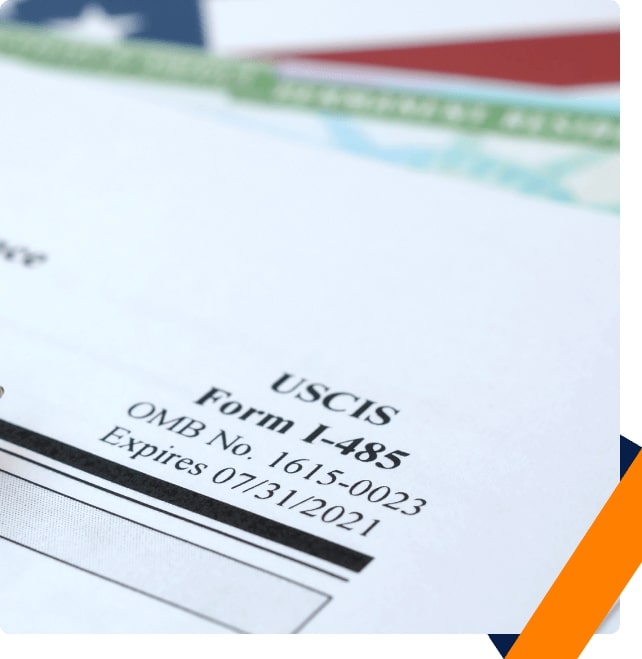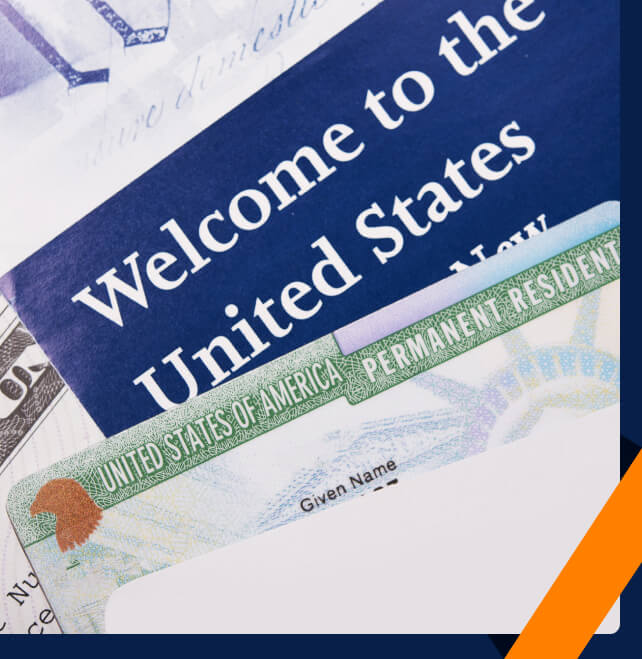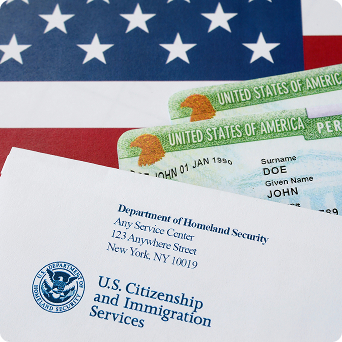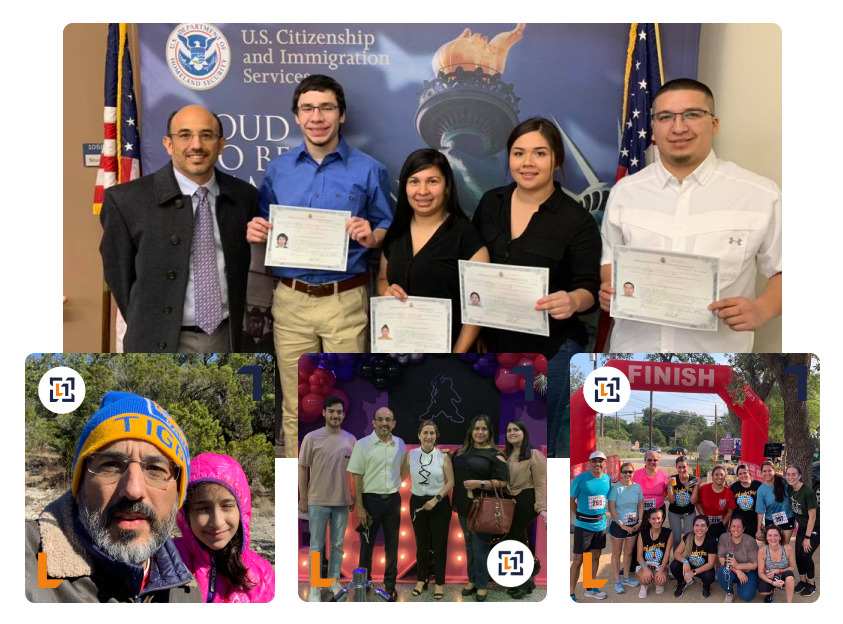Guide To The Green Card Application Process In Laredo TX
Securing a Green Card is a life-changing step for families seeking to reunite in the United States. It provides permanent residency, allowing individuals to live and work without restrictions. For Laredo residents, understanding the Green Card application process can enhance the chances of a successful outcome.
The family-based Green Card process involves multiple steps, each requiring careful attention. Knowing every stage, from eligibility determination to the final interview, helps to navigate it correctly, avoiding delays and denials. Explore how a trusted law firm can simplify the process.
Green Card Application Process Categories
Family-based Green Cards allow U.S. citizens and lawful permanent residents (LPRs) to sponsor eligible relatives for permanent residency. This process is a pathway to keeping families together. The eligibility depends on the relationship between the sponsor and the applicant.
Immediate Relatives
Immediate relatives of U.S. citizens have the shortest waiting period. This category includes spouses and unmarried children under 21. It also includes parents of U.S. citizens if the petitioner is 21 and older. Because there are no annual visa limits for immediate relatives, their applications are processed faster than those in the family preference categories.
Family Preference Categories
Relatives who do not qualify as immediate relatives fall into family preference categories. These include adult children, married children, and siblings of U.S. citizens. It also includes spouses and unmarried children of LPRs.
Now, explore the detailed guide to the family-based Green Card application. Knowing these steps helps applicants prepare for their next move. A Laredo TX immigration attorney can assist applicants in going through each stage.

Step 1: Determining Eligibility
Before beginning the application, it is vital to confirm eligibility. This step involves assessing the relationship between the sponsor and the applicant. The sponsor must also meet financial requirements to prove they can support their relative without government assistance.
Qualifying Family Relationships
The first step is ensuring the applicant falls under the immediate relatives or family preference categories. The U.S. family immigration system balances demand by categorizing applicants. Immediate relatives avoid visa limits, ensuring quicker reunification.
Preference categories face quotas, managing backlog, and fairness. Processing times can also vary from a few years to over a decade. This structure controls the timeline while maintaining family unity.
Affidavit Of Support
The sponsor must be either a U.S. citizen or a lawful permanent resident. Additionally, they must submit an Affidavit of Support (Form I-864) proving they have sufficient financial resources. This document ensures that the applicant will not become a public charge and assures immigration authorities.
Applicant’s Admissibility
USCIS reviews each applicant’s history for potential inadmissibility. Criminal records, previous immigration violations, or medical issues may lead to denial. Sometimes, applicants must apply for a waiver to address these issues. A Laredo TX immigration lawyer can assist applicants in overcoming these barriers effectively.
Step 2: Filing Form I-130 (Petition For Alien Relative)
The first official step in the Green Card application is filing Form I-130. This form establishes the relationship between the U.S. citizen or permanent resident and their relative. Submitting a well-prepared petition helps avoid unnecessary delays and increases the likelihood of a smooth approval.

Completing The Form
Form I-130 requires detailed information about the petitioner and the beneficiary. It includes names, addresses, birth dates, and immigration history. Any discrepancies or missing details can result in delays. Ensuring that all information matches official documents, such as passports and birth certificates, is critical.
Requiring Supporting Documents
Applicants must submit proof of the claimed relationship. It may include birth certificates, marriage certificates, or adoption records. U.S. citizens or lawful permanent residents must also provide proof of status, such as a passport, naturalization certificate, or Green Card. Insufficient documentation may result in a Request for Evidence (RFE).
Submitting The Application
Form I-130 can be filed online through the USCIS website or by mailing a paper application. The filing fee is $535, payable by check, money order, or credit card. Processing times vary depending on the relationship category and the workload of the immigration office handling the case.
Step 3: Waiting For Petition Approval & Visa Availability

Once Form I-130 is submitted, USCIS reviews the application to verify the relationship. Processing times vary, and applicants can track their cases online. After approval, visa availability depends on whether the applicant is an immediate relative or falls under a family preference category.
USCIS Decisions
Approval means the USCIS recognizes the relationship but does not grant a Green Card immediately. If USCIS requires additional proof, they may issue a Request for Evidence (RFE). A denial can occur due to insufficient documentation or ineligibility, but applicants may appeal the decision.
Visa Availability
Immediate relatives do not have to wait for a visa. However, family preference applicants must check the Visa Bulletin to determine when a visa becomes available. The waiting period varies based on the applicant’s relationship to the sponsor and their country of origin.
Step 4: Undergoing Consular Processing Or Adjustment Of Status
After petition approval, applicants must choose between Consular Processing and Adjustment of Status (AOS). The right option depends on the applicant’s location. Those outside the U.S. typically go through Consular Processing, while those already in the country may qualify for Adjustment of Status.
Consular Processing
Consular Processing requires applicants to attend an interview at a U.S. embassy or consulate in their home country. After approval, they receive an immigrant visa, allowing them to enter the U.S. as a permanent resident. This process is often faster but requires the applicant to remain abroad.
Adjustment Of Status
Applicants already in the U.S. may apply for Adjustment of Status by filing Form I-485. This process allows them to obtain a Green Card without leaving the country. However, not all applicants qualify. Overstaying a visa or previous immigration violations can complicate
approval.

Step 5: Attending Medical Examination & Biometrics Appointment
Attending a medical examination and biometrics appointment is critical in consular processing and Adjustment of Status for a Green Card. These procedures verify applicants’ health, identity, and background, ensuring they meet all eligibility requirements.
Medical Examination
A medical examination is required for Green Card applicants to ensure they meet U.S. health standards. Conducted by an approved doctor, it includes a physical exam, vaccination review, and necessary tests. Applicants must bring identification, medical history, and vaccination records.
The doctor submits the results to USCIS or the consular office. Missing the exam or failing to meet health requirements can delay or impact the application. Scheduling promptly, following instructions, and providing accurate information smoothens the process and avoids unnecessary setbacks.
Biometrics Appointment
USCIS schedules this appointment to collect fingerprints, a photo, and a signature for identity verification and background checks. Applicants receive a notice (Form I-797C) with the date, time, and location. The process is quick, often taking less than 30 minutes.
Missing the appointment can delay or jeopardize the application. After collecting biometrics, USCIS runs security checks with the FBI and other agencies before moving forward with the next steps in the process.
Step 6: Going Through The Green Card Interview
The Green Card interview is a critical step in the application process. It allows immigration officers to verify the authenticity of an applicant’s relationship and assess their eligibility. Being well-prepared ensures a smooth experience and reduces the risk of delays or denials.

Common Interview Questions
Applicants should expect questions about their relationship with the sponsor. Officers may ask marriage-based Green Card applicants about their wedding, daily routines, and plans. Officers may also inquire about the applicant’s immigration history, financial stability, and any previous visa applications or entries into the U.S.
Documents To Bring
Bringing the correct documents is essential for a successful interview. Applicants should carry their original passports, birth certificates, marriage certificates (if applicable), financial support documents, and any previous immigration records. Missing documents can lead to delays or additional scrutiny from the interviewing officer.
Tips For A Successful Interview
Answering questions honestly and confidently is key to making a good impression. Addressing them calmly and directly is the right approach if an officer asks about discrepancies. Applicants with red flags, such as significant age differences or past visa overstays, should be prepared to provide reasonable explanations.
Step 7: Receiving The Decision
After the interview, the USCIS or the U.S. consulate will decide. The outcome determines whether the applicant will receive a Green Card or needs to provide additional information. Understanding possible results helps applicants prepare for their next steps.
Possible Outcomes
A Green Card approval means the application has been successful. If the applicant is applying through Consular Processing, they receive a visa and must enter the U.S. before receiving the physical Green Card. If applying through Adjustment of Status, USCIS will mail the Green Card directly.
Requests For Additional Evidence (RFE)
Sometimes, USCIS requests additional documents before making a decision. RFE may happen if an officer needs more proof of a relationship or financial support. Responding promptly and providing accurate, complete documentation can prevent unnecessary delays in the approval process.
Denial & Appeal Options
A denial can be frustrating, but it is not always the end of the road. Applicants may appeal the decision or reapply after correcting any errors. Consulting an immigration lawyer can help determine the best course of action after receiving a denial.
Next Steps After Approval
Once the Green Card is issued, the applicant officially becomes a permanent resident. New residents can apply for a Social Security card, a driver’s license, and other government benefits. Keeping the Green Card safe and renewing it before expiration ensures continued legal status.
Legal guidance and support make applicants confident they are doing the right thing. A Laredo TX immigration law firm can provide just that.
Lozano Law Firm Helps Secure A Green Card
At Lozano Law Firm, we know how important family is. That’s why we’re here to guide Laredo residents through the Green Card process, making it as smooth and stress-free as possible. With our legal support, you can move forward with confidence.
We assist with every step, from filing Form I-130 and I-485 to ensuring all paperwork is complete and accurate. If you’re applying from outside the U.S., we handle consular processing to keep your case on track. If you’ve faced a denial or need a waiver, we’ll assess your case and create a strategy to address USCIS’s concerns.
Our experience with immigration law helps us find solutions so you can move forward. Reuniting families is at the heart of what we do. We provide hands-on guidance throughout the process, focusing on accuracy and efficiency. With us by your side, you’ll have the best possible chance of success.
Applying for a family-based Green Card involves multiple steps, from filing Form I-130 to attending the final interview. Avoiding mistakes, responding to Requests for Evidence quickly, and preparing well for the interview can improve approval chances. Choosing the correct application process—Consular Processing or Adjustment of Status—is also vital.
Legal assistance can make the journey easier. Lozano Law Firm provides trusted legal guidance for Laredo families seeking permanent residency for their loved ones. We file applications correctly, prepare for interviews, and address any obstacles. For those needing legal support, Lozano Law Firm is a reliable partner.

Real Clients, Real Testimonials
-
Dora Lopez Google Client Review
Excellent service and attention from each of the people who guide you in the process…they have already helped us in the immigration process of several members of our family…
Read more -
Clarissa Gaytan Google Client Review
This team was excellent to us, they are very prompt and organized. If we were missing something they would notify us that same day. If I had questions they would reply quickly to all my emails. All around very helpful and professional group.
Read more -
Felix Sanchez Google Client Review
As I've worked with lozano law firm they been sooo much help guiding us helping us understand from sheila from maribel from ms gloria and josue they been sooo much help helpful so dedicated to help me and my family to reunite thank u guys from the bottom of my heart.
Read more -
Kara Wilson Google Client Review
Absolutely fantastic! I could not have asked for a better experience. Mr. Lozano was incredibly competent, kind, supportive and professional. He went above and beyond to understand our case and help us. I highly recommend him!
Read more -
Jose Ancer Google Client Review
Mr. Alfredo Lozano and his team accompanied me throughout my immigration process with attention, clarity and a lot of professionalism. There was always someone on hand, answering questions and taking care of every detail. It shows when a team really cares about helping you. I recommend them with all confidence.
Read more -
Eduardo Loera Google Client Review
My interaction with the law firm was so positive. They explained everything every step of the way. They anticipated how long it would take and insured I had all of the necessary paperwork ready ahead of time. They are prepared for any scenario. I highly recommend them for immigration legal work. I’ll be singing their praises to everyone I know.
Read more -
Debbie Zamora Google Client Review
This office is very exceptional. We were nervous at 1st because with everything going we were not sure if to trust them or not, but with God's guidance and reassurance that this was the place to be at we were good. From the 1st phone call to the office, to the paralegal to the attorney himself, to the video call We were very impressed. Not rude at all. Very understanding, compassionate, detailed and very patient with us. I do recommend this office to everyone who is in a situation as we were. Thank you so much to all of you for helping us out. Now we can relax in spirit, mind and body.
Read more -
Francisco Berdon Google Client Review
The excellent and high-quality service they offer is unique, not only in Texas but throughout the United States. Highly recommended. All their staff are highly qualified and very friendly.
Read more -
Juan Ramirez Google Client Review
Hello, my name is Juan. My fiancée and I were very satisfied with the excellent work you did for us. You were undoubtedly very qualified people. Thank you, Zayda Hernandez, and the entire staff at this law firm.
Read more -
J Carlos Ruano Google Client Review
We are very grateful for the process my family and I requested. It may have taken longer than expected, but the result was positive, and I was kept informed of the status at all times. I highly recommend them. The attention and follow-up from Attorneys Lozano and Oneylis was very professional. Thank you both for your attention and support throughout my process.
Read more
Contact Our Immigration Lawyer
Contact Us Today For A Free Case Evaluation!
We respect your privacy. The information you provide will be used to answer your question or to schedule and appointment if requested.

